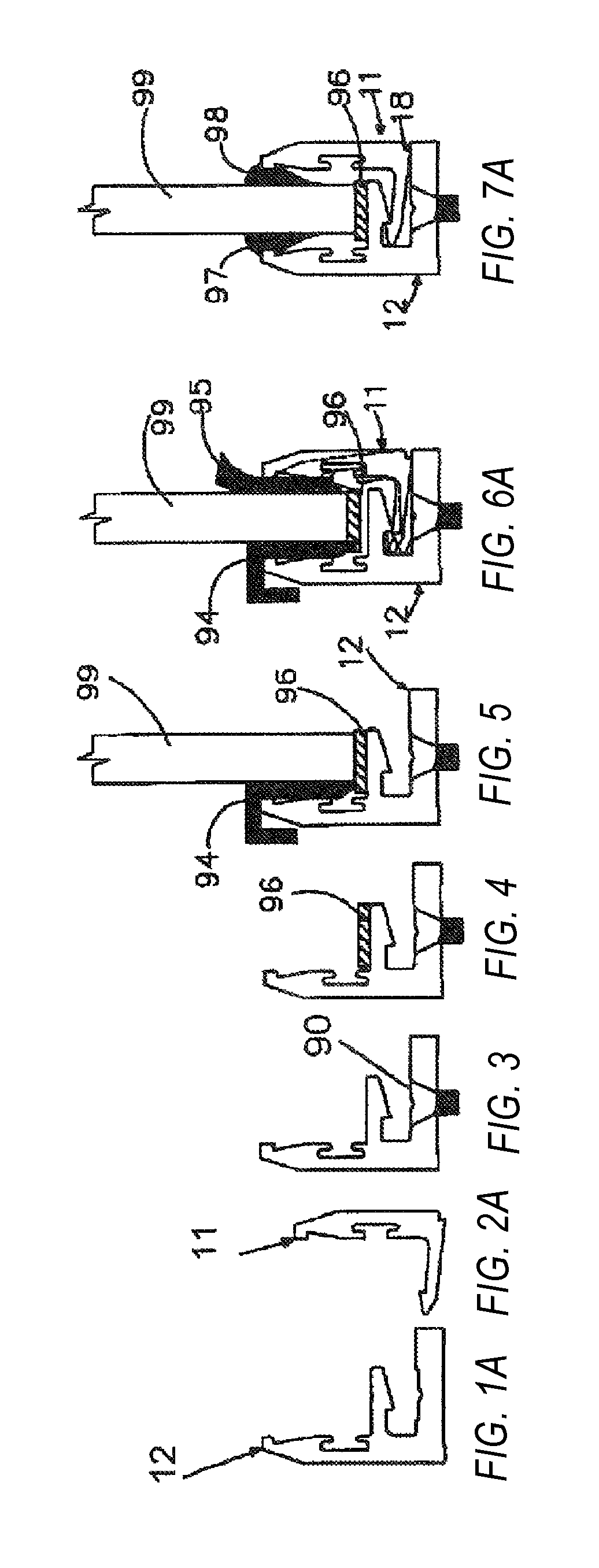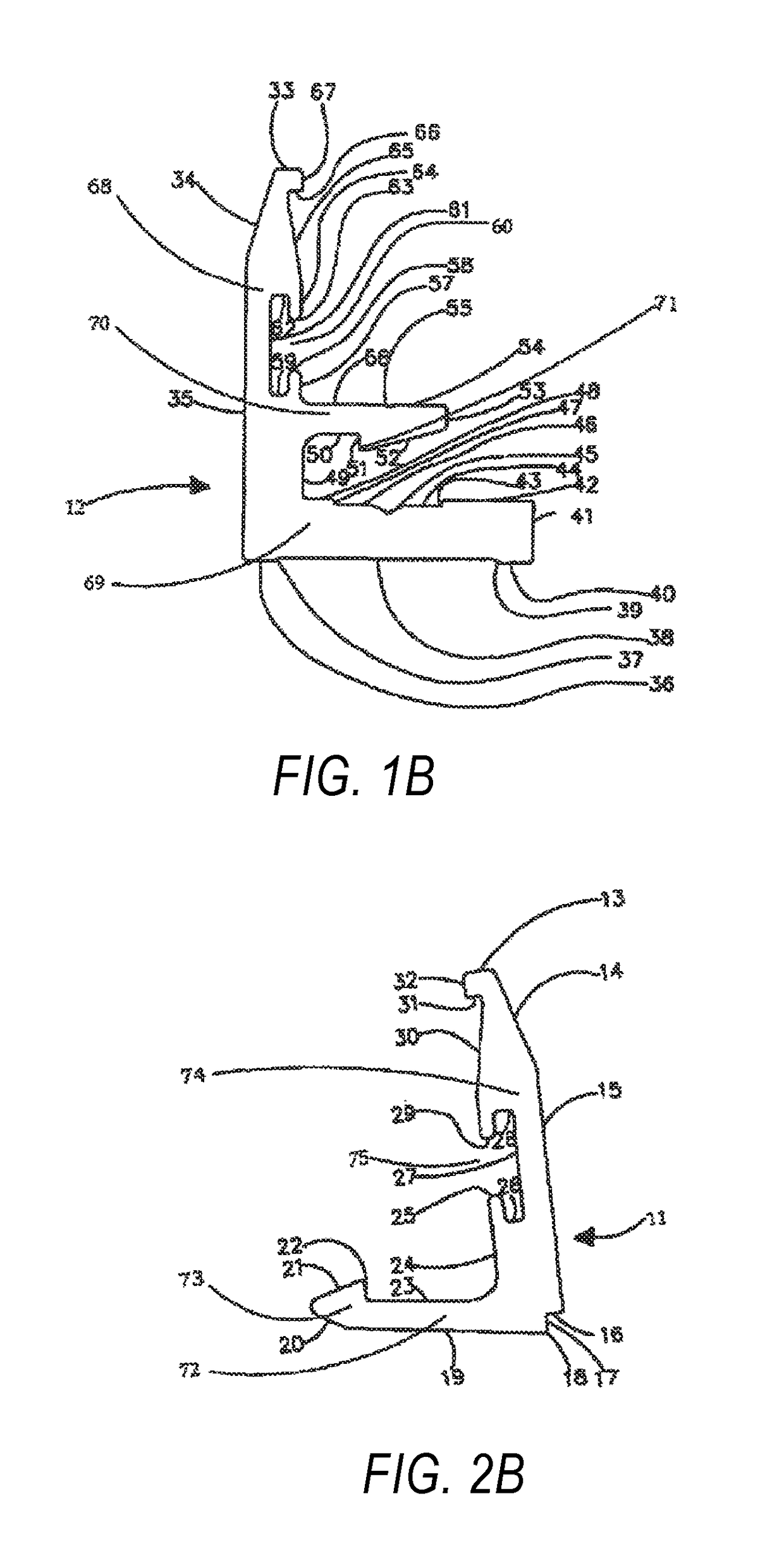Glazing system with thermal break
a technology of thermal break and glazing system, which is applied in the direction of glass pane fixing, wing frames, balusters, etc., can solve the problems of laborious, complicated work, and eventually expensiv
- Summary
- Abstract
- Description
- Claims
- Application Information
AI Technical Summary
Benefits of technology
Problems solved by technology
Method used
Image
Examples
Embodiment Construction
[0042]The self-lock glazing system consists of two extruded aluminum profiles, a male profile 11, FIG. 2A and a female profile 12, FIG. 1A as described in the succeeding paragraphs, designed in such a way to create a secure space for keeping glass panels safely and tightly in position. An important aspect is that when a glass panel 99, FIG. 7A is placed on the upper leg 70 of the female profile 12 and the male profile 11 is inserted and rubber beadings 97, 98 are forced in (by hand) between the said glass panel 99 and the profiles 12, 11 respectively creates outward forces F, FIG. 8 on the vertical tips of the said profiles (forcing them apart). The turning moment at the pivotal fulcrum 18 of the said male profile 11 forces the locking system together because of the complementary locking tips 73 and 71 provided on the profiles as a result, the system interlocks and thus arrest the profiles (11 and 12) in position; eventually the said glass panel 99 held in guard (under the pressure ...
PUM
 Login to View More
Login to View More Abstract
Description
Claims
Application Information
 Login to View More
Login to View More - R&D
- Intellectual Property
- Life Sciences
- Materials
- Tech Scout
- Unparalleled Data Quality
- Higher Quality Content
- 60% Fewer Hallucinations
Browse by: Latest US Patents, China's latest patents, Technical Efficacy Thesaurus, Application Domain, Technology Topic, Popular Technical Reports.
© 2025 PatSnap. All rights reserved.Legal|Privacy policy|Modern Slavery Act Transparency Statement|Sitemap|About US| Contact US: help@patsnap.com



